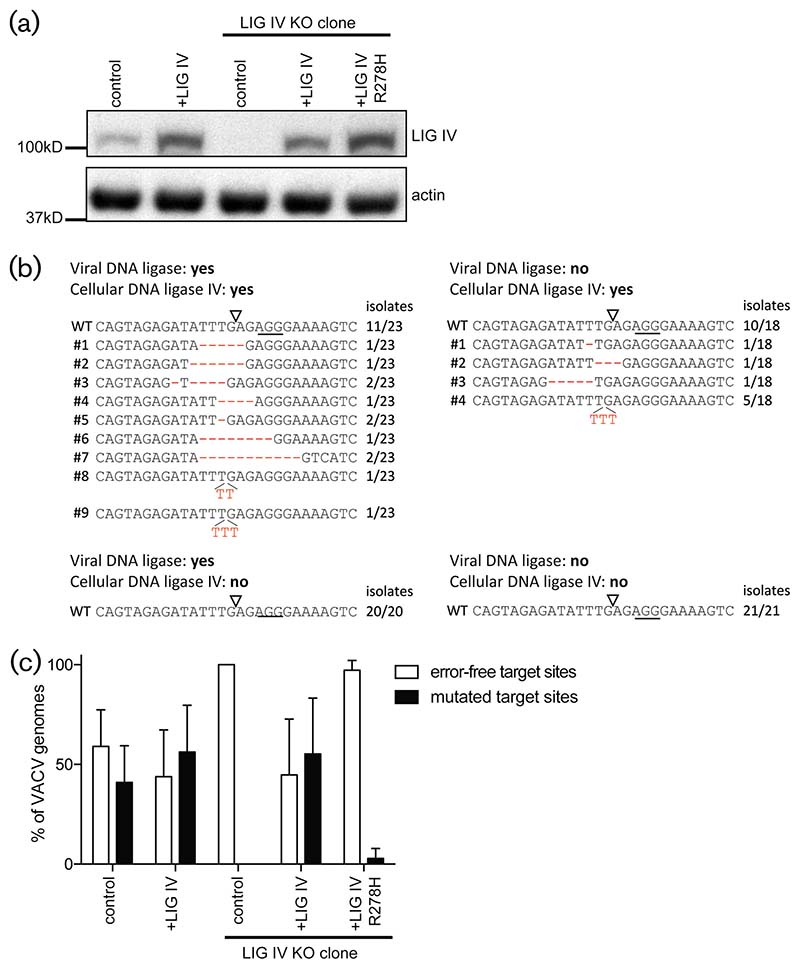Fig. 5.
Cellular DNA ligase IV mediates NHEJ of VACV genomes upon CRISPR/Cas9 cleavage. (a) DNA ligase IV (upper panel) and actin (lower panel) protein expression levels in cells co-expressing Cas9 and gRNA A23R#2 (lanes 1–5). Lanes 1 and 2 represent a cell line expressing endogenous DNA ligase IV and lanes 3–5 represent a clonal DNA ligase IV knockout line. Cells were transduced with either a control lentiviral vector (control), a lentiviral vector encoding DNA ligase IV (+LIG IV), or the DNA ligase IV-R278H mutant (+LIG IV R278H). (b) Polyclonal cells expressing DNA ligase IV or the DNA ligase IV KO clone were infected with vSK20 virus lacking DNA ligase and the vSK21 revertant expressing DNA ligase. VACV genomic regions surrounding gRNA target sites were amplified from virus supernatant and sequenced. Solid lines indicate the PAM sequences; open triangles indicate the Cas9 cleavage site. Numbers indicate the abundance of the given virus mutant within the sequenced virus population. (c) Frequency of mutations observed at the A23R#2 CRISPR target site. The cells described in (a) were infected with VACV vSK21 in triplicate. Virus genomes were harvested 9 days p.i. and the A23R#2 target site of 24 isolates per triplicated infection was sequenced.

